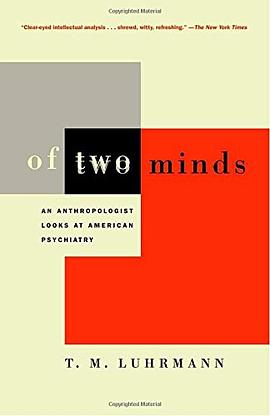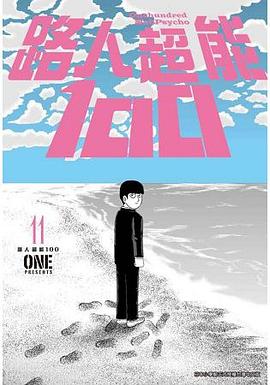Of Two Minds
内容简介
With sharp and soulful insight, T. R. Luhrmann examines the world of psychiatry, a profession which today is facing some of its greatest challenges from within and without, as it continues to offer hope to many.
At a time when mood-altering drugs have revolutionized the treatment of the mentally ill and HMO’s are forcing caregivers to take the pharmocological route over the talking cure, Luhrmann places us at the heart of the matter and allows us to see exactly what is at stake. Based on extensive interviews with patients and doctors, as well as investigative fieldwork in residence programs, private psychiatric hospitals, and state hospitals, Luhrmann’s groundbreaking book shows us how psychiatrists develop and how the enormous ambiguities in the field affect its practitioners and patients.
......(更多)
作者简介
Tanya Marie Luhrmann (born 1959) is an American psychological anthropologist best known for her studies of modern-day witches, charismatic Christians, and psychiatrists. She received her AB summa cum laude in Folklore and Mythology from Harvard-Radcliffe in 1981, working with Stanley Tambiah. She then studied Social Anthropology at Cambridge University[1], working with Jack Goody and Ernest Gellner. In 1986 she received her PhD for work on modern-day witches in England, later published as Persuasions of the Witch's Craft (1989). In this book, she described the ways in which magic and other esoteric techniques both serve emotional needs and come to seem reasonable through the experience of practice.[2]
Her second research project looked at the situation of contemporary Parsis, a Zoroastrian community in India. The Parsi community enjoyed a privileged position under the British Raj; although by many standards, Parsis have continued to do quite well economically in post-colonial India, they have become politically marginal in comparison to their previous position, and many Parsis speak pessimistically about the future of their community. Luhrmann's book The Good Parsi (1996) explored the contradictions inherent in the social psychology of a post-colonial elite.
Her third book, and the most widely acclaimed, explored the contradictions and tensions between two models of psychiatry, the psychodynamic (psychoanalytic) and the biomedical, through the ethnographic study of the training of American psychiatry residents during the health care transition of the early 1990s.[3] Of Two Minds (2000) received several awards, including the Victor Turner Prize for Ethnographic Writing and the Boyer Prize for Psychological Anthropology (2001).[4]
Currently she is working on two projects. One is an NIMH-funded study of how life on the streets (chronically or periodically homeless) contributes to the experience and morbidity of schizophrenia.[5] The other project examines the growing movement of evangelical and charismatic Christianity, and specifically how practitioners come to experience God as someone with whom they can communicate on a daily basis through prayer and visualization.
Tanya Luhrmann was a faculty member in the Department of Anthropology at the University of California, San Diego, from 1989-2000. From 2000-2007, she was Max Palevsky Professor in the Department of Comparative Human Development at the University of Chicago, where she was also a director of the program in Clinical Ethnography.[6] As of spring 2007, she is now a professor in the Department of Anthropology at Stanford University.[7]
She was elected a fellow of the American Academy of Arts and Sciences in 2003,[8] president of the Society for Psychological Anthropology for 2008. She has received numerous awards for scholarship, including the AAA President's award for 2004[9]and a 2007 Guggenheim award.[10][11] She often publishes as T.M. Luhrmann. In 2006, Luhrmann delivered the Lewis Henry Morgan Lecture at the University of Rochester, considered by many to be the most important annual lecture series in the field of Anthropology.[12]
......(更多)
目录
Aurthor's Note
Introduction
CHAPTER ONE: What's Wrong with the Patient?
CHAPTER TWO: The Arrow of Harm
CHAPTER THREE: The culture and Its Contradictions
CHAPTER FOUR: The Psychiatric Scientist and the Psychoanalyst
CHAPTER FIVE: Where the Split Came From
CHAPTER SIX: The Crisis of Managed Care
CHAPTER SEVEN: Madness and Moral Responsibility
Technical Appendix
Notes
Bibliography
Acknowledgments
Index
......(更多)
读书文摘
......(更多)






